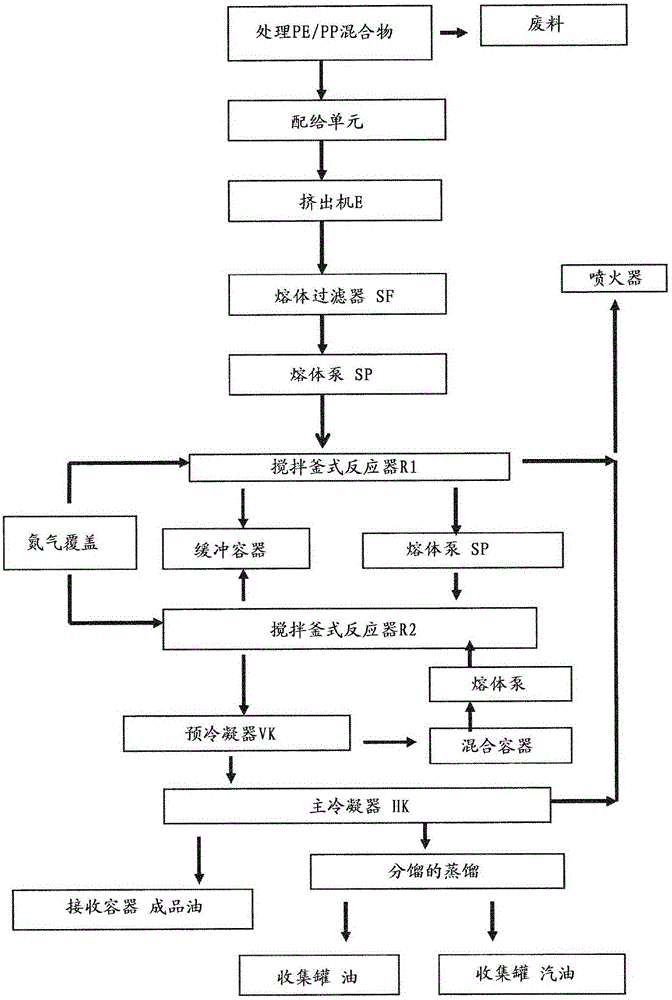Method for the degrading of synthetic polymers and device for carrying out said method
A polymer and equipment technology, applied in the field of decomposing and synthesizing polymers, can solve problems such as the usability or applicability of finished oil is not optimal, the method and process cannot be controlled, and has not yet been successful.
- Summary
- Abstract
- Description
- Claims
- Application Information
AI Technical Summary
Problems solved by technology
Method used
Image
Examples
Embodiment Construction
[0135] exist figure 1 A process flow diagram of a first embodiment of the current method is shown in . The basis of the method is a polyolefin mixture with a proportion of polyethylene and polypropylene of more than 95%, which is ground and freed from waste materials such as minerals, metals, fibrous substances, paper and plastics. Methods known for this are known to those skilled in the art. The waste is either sent to wash water, in the case of which it is biological waste, or is subjected to other cleaning measures.
[0136] The processed PE / PP mixture is conveyed continuously to the extruder E via a dosing unit as conveying device Z. The PE / PP mixture was melted in the extruder E by heating to 300° C., wherein residual moisture in the polymer mixture was simultaneously removed and degassed.
[0137] The PE / PP mixture melted in the extruder E is conveyed via heated lines into or through a melt filter SF where it is cleaned from the PE / PP melt The remaining traces of min...
PUM
| Property | Measurement | Unit |
|---|---|---|
| boiling point | aaaaa | aaaaa |
| thickness | aaaaa | aaaaa |
| thickness | aaaaa | aaaaa |
Abstract
Description
Claims
Application Information
 Login to View More
Login to View More - R&D
- Intellectual Property
- Life Sciences
- Materials
- Tech Scout
- Unparalleled Data Quality
- Higher Quality Content
- 60% Fewer Hallucinations
Browse by: Latest US Patents, China's latest patents, Technical Efficacy Thesaurus, Application Domain, Technology Topic, Popular Technical Reports.
© 2025 PatSnap. All rights reserved.Legal|Privacy policy|Modern Slavery Act Transparency Statement|Sitemap|About US| Contact US: help@patsnap.com



